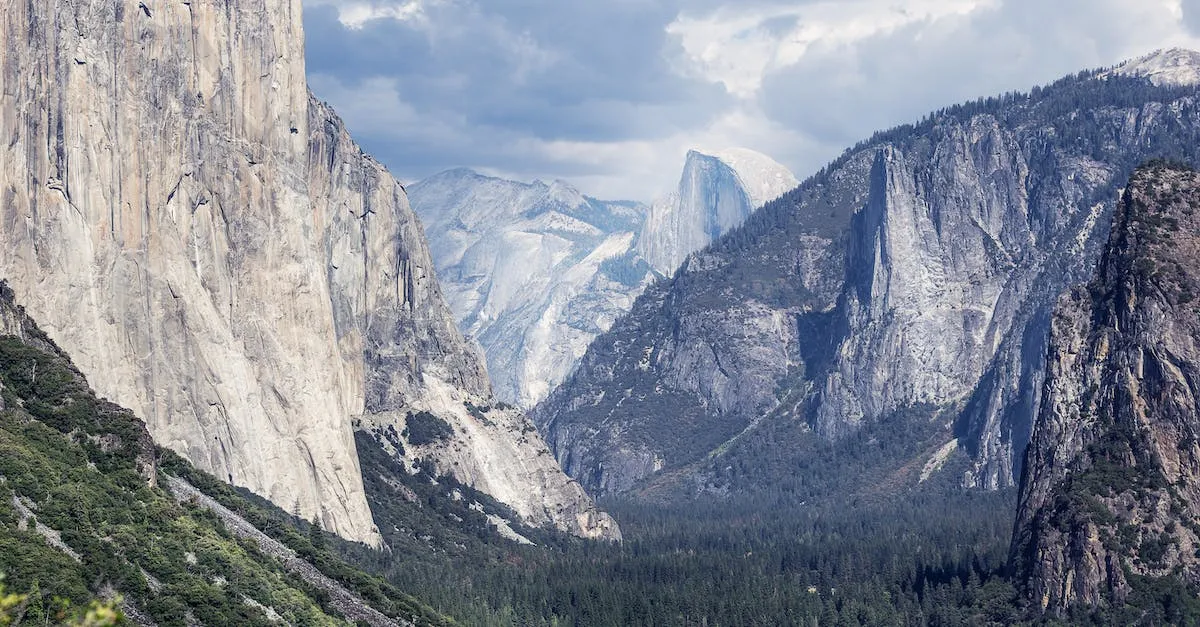Where Is The Valley In California? A Guide To The Central Valley Region
If you’ve heard references to ‘the Valley’ in California but aren’t sure where exactly it’s located, you’re not alone. In short, the Central Valley is a large, expansive region stretching down the interior center of California. It contains cities like Fresno, Bakersfield, and Stockton and is known for its agriculture.
This comprehensive guide will walk you through everything you need to know about the Central Valley region of California. We’ll cover the location, climate, major cities, industries, history, and more so you can get better acquainted with this vital area of the state.
Defining the Boundaries and Location
The Central Valley is a vast region located in the heart of California, stretching approximately 450 miles from north to south. It is bordered by the Sierra Nevada Mountains to the east and the Coast Ranges to the west.
The valley is divided into three main sections: the northern, central, and southern sections.
Northern, Central, and Southern sections
The northern section of the Central Valley begins around Redding and extends southward to the Sacramento-San Joaquin Delta. This area is known for its fertile soil and agricultural productivity, making it a key contributor to California’s agricultural industry.
The central section stretches from the delta to Fresno, and it is characterized by vast expanses of farmland and orchards. The southern section starts from Fresno and reaches all the way down to Bakersfield, where the valley transitions into the Mojave Desert.
Major geographic features
The Central Valley is home to several major geographic features that contribute to its unique landscape. The Sacramento River and the San Joaquin River, which both flow through the valley, are the two primary waterways that provide irrigation for the region’s agriculture.
The Sacramento-San Joaquin Delta, where the two rivers meet, is an ecologically diverse area and serves as an important habitat for various wildlife species.
The valley is also flanked by two mountain ranges: the Sierra Nevada Mountains to the east and the Coast Ranges to the west. These mountains not only provide a picturesque backdrop but also play a crucial role in shaping the climate and weather patterns of the region.
The Sierra Nevada Mountains, with their towering peaks and snow-capped summits, act as a barrier and influence the valley’s precipitation levels.
Notable regions within the Valley
Within the Central Valley, there are several prominent regions that stand out for their unique characteristics and contributions. The Sacramento Valley, located in the northern section, is known for its extensive rice fields and almond orchards.
The San Joaquin Valley, which covers the central and southern sections, is recognized as one of the most productive agricultural regions in the world, producing crops such as grapes, tomatoes, and cotton.
Additionally, the Central Valley is home to the Yosemite National Park, one of the most popular natural attractions in California. With its towering waterfalls, majestic granite cliffs, and diverse ecosystems, Yosemite draws millions of visitors each year, showcasing the natural beauty that can be found within the region.
To learn more about the Central Valley and its various attractions and activities, you can visit Visit California.
Climate and Geography
The Central Valley region in California is known for its unique climate and geography. Let’s explore what makes this region so special.
Hot, dry Mediterranean climate
The Central Valley experiences a hot, dry Mediterranean climate, characterized by long, dry summers and mild, wet winters. With an average of over 300 sunny days per year, it’s no wonder this region is often referred to as the “Sunshine State.”
Summers can be scorching, with temperatures often exceeding 100 degrees Fahrenheit (38 degrees Celsius). However, the region benefits from cool coastal breezes that provide relief from the heat.
The Mediterranean climate also brings a distinct rainy season during the winter months. The majority of the rainfall occurs between November and March, with an average annual rainfall of around 12-20 inches (30-50 cm).
This precipitation is crucial for the region’s agriculture, as it helps sustain the fertile farmlands that the Central Valley is famous for.
Flat valley floor
The Central Valley is characterized by its vast, flat valley floor, stretching approximately 450 miles (720 kilometers) from north to south. This flatness makes the region ideal for agriculture, as it provides large expanses of arable land for crops to grow.
The fertile soil, combined with the abundant sunshine and irrigation systems, has made the Central Valley one of the most productive agricultural regions in the world.
Despite its flatness, the Central Valley is surrounded by stunning mountain ranges. The Sierra Nevada Mountains to the east and the Coast Ranges to the west add a breathtaking backdrop to the valley and create a unique microclimate within the region.
Rivers and waterways
The Central Valley is home to several major rivers and waterways that play a vital role in the region’s ecosystem and agriculture. The Sacramento River, the San Joaquin River, and their tributaries flow through the valley, providing water for irrigation and serving as important transportation routes.
These waterways also support a diverse range of wildlife and contribute to the region’s natural beauty. They offer recreational opportunities for fishing, boating, and wildlife observation, attracting nature enthusiasts and outdoor adventurers alike.
For more information about the Central Valley’s climate and geography, you can visit the official website of the Central Valley Tourism Association.
Major Cities and Regions
The Central Valley region in California is home to several major cities and regions that contribute to the state’s economy and cultural diversity. Let’s take a closer look at some of the prominent cities in the Central Valley:
Fresno
Fresno is the largest city in the Central Valley and serves as the economic and cultural hub of the region. Known for its agricultural industry, Fresno is often referred to as the “Raisin Capital of the World.”
The city is also home to California State University, Fresno, which attracts students from all over the state.
Bakersfield
Bakersfield, located in the southern part of the Central Valley, is known for its oil production and agricultural activities. The city has a vibrant music scene, with many country music artists calling Bakersfield home.
Bakersfield is also home to the Kern County Museum, which showcases the area’s rich history.
Stockton
Stockton is a major port city located on the San Joaquin River in the Central Valley. It has a diverse population and is known for its cultural events and festivals. Stockton is also home to the University of the Pacific, a prestigious private university.
Modesto
Modesto is another important city in the Central Valley and is known for its agricultural industry, particularly in the production of dairy products and almonds. The city gained national recognition as the setting for George Lucas’ film, “American Graffiti.”
Modesto also hosts a variety of cultural events and festivals throughout the year.
Visalia
Visalia is a city located in the heart of the Central Valley and is known for its rich agricultural heritage. The city is surrounded by picturesque landscapes and is often referred to as the “Gateway to the Sequoias” due to its proximity to Sequoia National Park.
Visalia also boasts a vibrant downtown area with a variety of shops, restaurants, and entertainment venues.
These cities and regions in the Central Valley contribute to the unique charm and economic vitality of the area. Whether you’re interested in agriculture, arts and culture, or outdoor adventures, the Central Valley has something to offer for everyone.
Industries, Agriculture and Economy
The Central Valley region in California is known for its diverse and thriving industries. With its fertile soil and favorable climate, the region has become a massive agricultural hub, producing a significant portion of the nation’s fruits, vegetables, and nuts.
In fact, the Central Valley is often referred to as the “breadbasket of America” due to its crucial role in feeding the nation. The agricultural industry in the Central Valley contributes billions of dollars to the state’s economy and provides numerous job opportunities for local residents.
Massive agricultural hub
From the vast orchards of almond and pistachio trees to the fields of tomatoes, lettuce, and grapes, the Central Valley is a powerhouse when it comes to agricultural production. Farmers in the region utilize innovative farming techniques and advanced irrigation systems to maximize crop yields.
The Central Valley’s agricultural productivity not only sustains the local economy but also supports the entire nation’s food supply.
According to the California Department of Food and Agriculture, the Central Valley accounts for over 50% of California’s total agricultural output. The region’s agricultural products are exported to various countries around the world, contributing to the state’s export revenue.
Oil and gas extraction
In addition to agriculture, the Central Valley is also home to a significant oil and gas extraction industry. The region has several oil fields, including the Kern River Oil Field, which is one of the largest in the state.
The extraction of oil and gas contributes to the region’s economy and provides employment opportunities for many residents.
The oil and gas industry in the Central Valley has faced environmental concerns due to its impact on air and water quality. Efforts are being made to balance economic growth with sustainable practices to minimize the industry’s environmental footprint.
Logistics and warehousing
Given its strategic location and transportation infrastructure, the Central Valley has become a prime location for logistics and warehousing operations. The region is intersected by major highways and is home to several distribution centers, making it an ideal hub for transporting goods throughout California and beyond.
The growth of e-commerce has further fueled the demand for logistics and warehousing facilities in the Central Valley. Companies like Amazon and Walmart have established large fulfillment centers in the region, creating job opportunities and bolstering the local economy.
History and Cultural Significance
The Central Valley region in California has a rich and diverse history that has shaped its cultural significance today. From its Native American roots to the present day, the Valley has been a place of immense historical and cultural importance.
Native American roots
Before European settlers arrived, the Central Valley was home to numerous Native American tribes, including the Miwok, Maidu, and Yokut. These tribes lived off the land, utilizing the Valley’s fertile soil and abundant natural resources for sustenance and trade.
Their cultural traditions and practices still resonate in the region today, with many Native American communities preserving their heritage through art, music, and storytelling.
Gold Rush and early American settlement
The discovery of gold in California in 1848 sparked the famous Gold Rush, attracting thousands of people from all over the world to the Central Valley. This influx of settlers transformed the region, leading to the establishment of towns and cities, and the rapid development of infrastructure.
The Gold Rush also brought cultural diversity to the Valley, with immigrants from China, Mexico, and Europe contributing to its vibrant tapestry.
Agricultural development
The Central Valley’s fertile soil and Mediterranean climate made it an ideal location for agriculture. In the late 19th century, farmers began cultivating crops such as wheat, barley, and citrus fruits.
However, it was the introduction of irrigation systems that truly revolutionized agriculture in the Valley. The construction of dams and canals allowed for large-scale irrigation, leading to the growth of crops like cotton, grapes, and almonds.
Today, the Central Valley is known as the “breadbasket of the world” due to its significant contribution to the nation’s agricultural output.
Present-day diversity
The Central Valley is a melting pot of cultures and ethnicities, with a diverse population that reflects its rich history. The region is home to a large Hispanic community, as well as significant populations of Asian Americans and African Americans.
This cultural diversity is celebrated through various festivals, events, and community organizations, fostering a sense of unity and inclusivity.
The Central Valley’s history and cultural significance are deeply intertwined, shaping the region’s unique identity. From its Native American roots to the present-day diversity, the Valley continues to be a testament to the rich tapestry of California’s past and present.
Conclusion
Encompassing the vast interior of California, the Central Valley region contains thriving cities, massive industrial agriculture, and a rich history. Stretching over 400 miles with major urban hubs like Fresno and Bakersfield, the Valley is known for its Mediterranean climate, fertile soil, and central role feeding the nation. With a diverse culture and economy, the Valley merits exploration to understand this core region of the Golden State.







